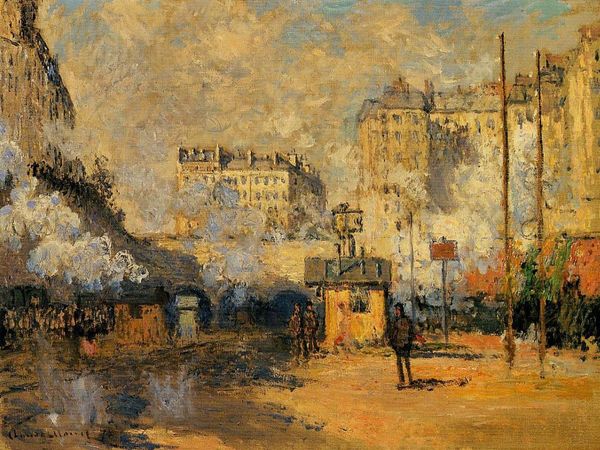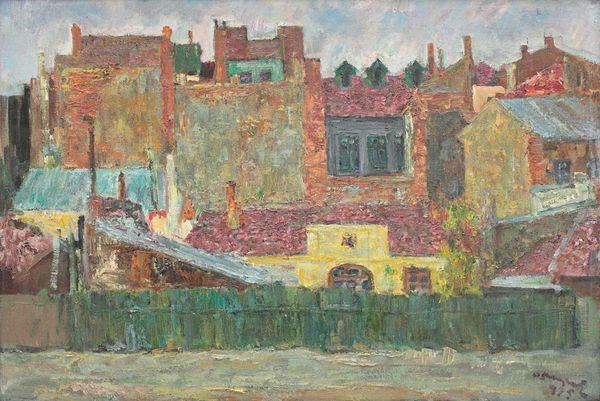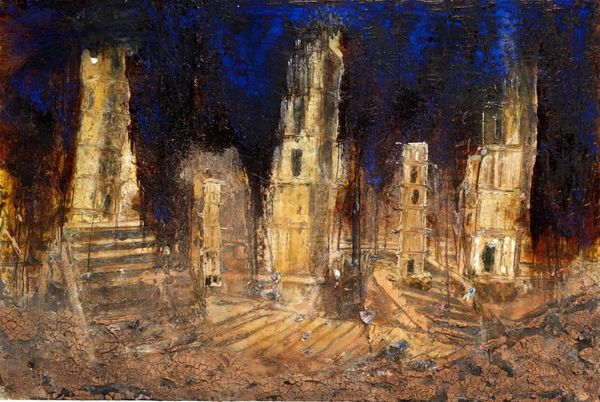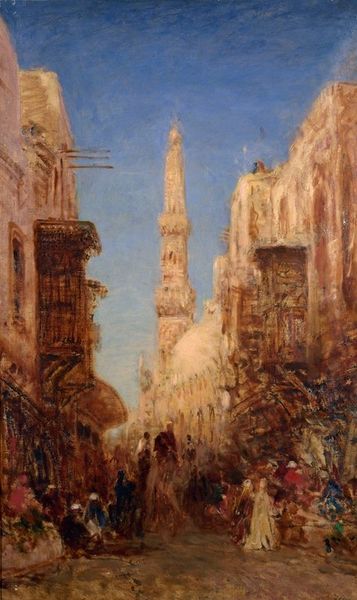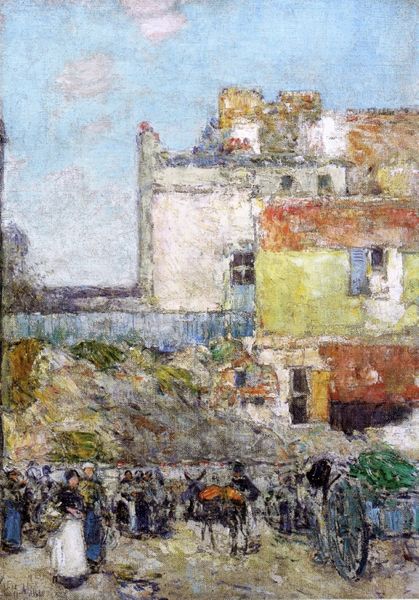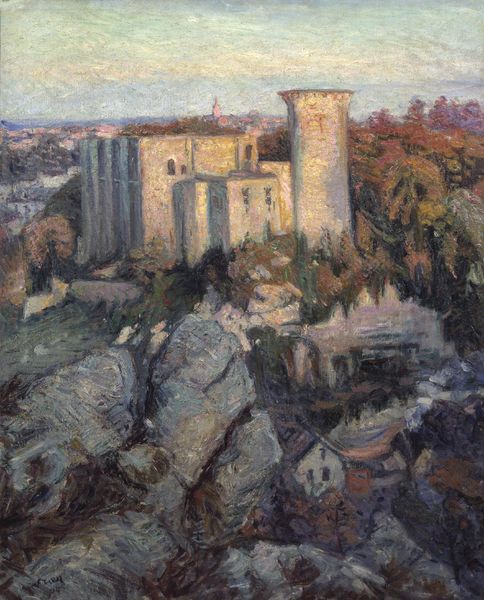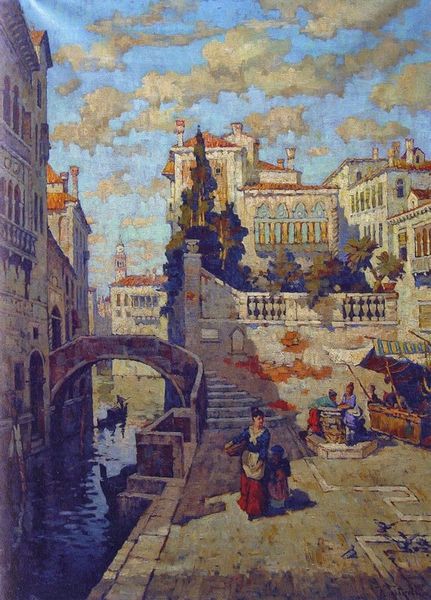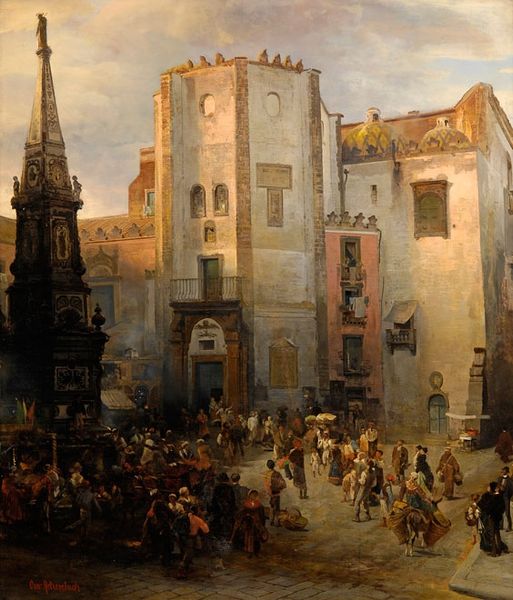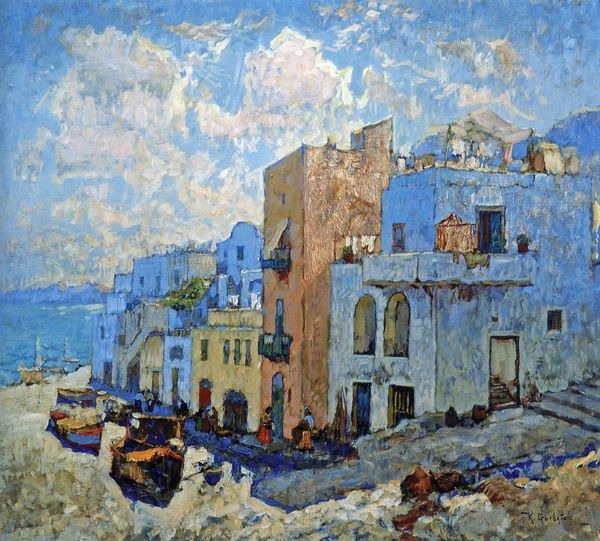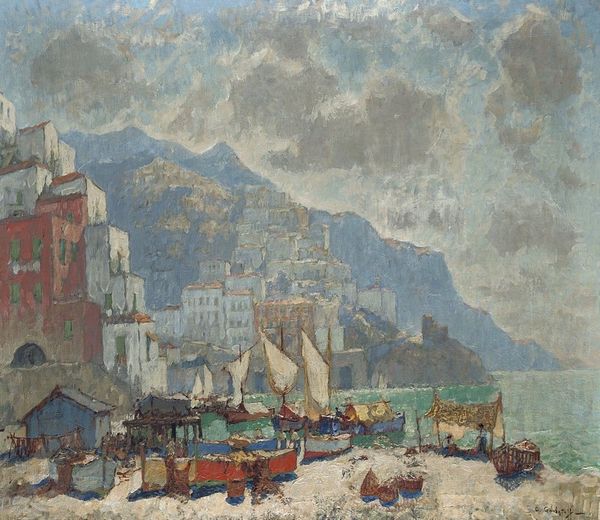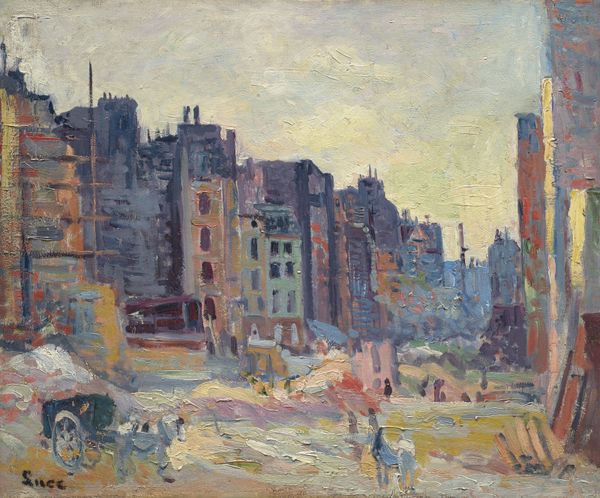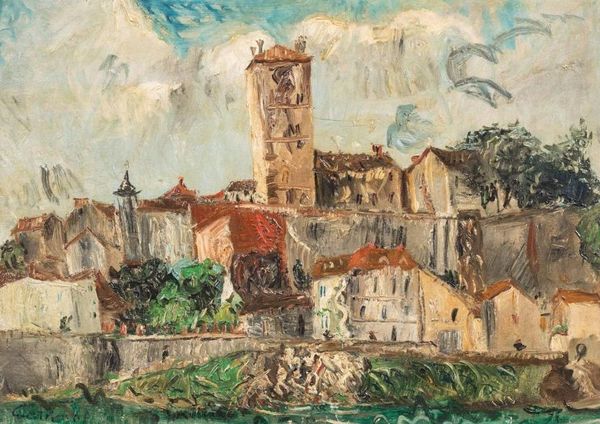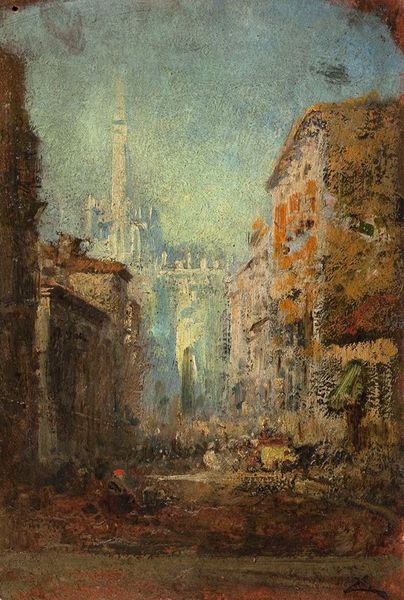
Copyright: Public domain
Curator: The painting we are looking at is "Oriental Town," an oil on canvas created in 1928 by Konstantin Gorbatov. Editor: It evokes a strange tranquility. The architecture is monumental but hazy, as though observed through a dreamy filter. There is something not real here; the colors have a strange allure, and those masses of people in the bottom look like painted clay. Curator: Indeed. Gorbatov, though trained in a classical realist style, leaned heavily into Impressionism, especially after he emigrated from Russia. "Oriental Town," exemplifies that, showing how he was part of the orientalist movement popular among European artists who wanted to represent "the exotic." Editor: I suppose so. The palette seems intentionally muted. I see the brushwork emphasizing texture, a contrast between the sky and stone. But it isn’t just observational; it almost feels like Gorbatov is painting from a memory, an idealized place rather than something he witnessed firsthand. Or even worse, a postcard. Curator: Orientalism carries precisely that dilemma – of idealization versus representation. Gorbatov was drawing on both direct observation, as he spent time in the Middle East, and received visual culture from others who had been there. As a political exile after the Revolution, he certainly wasn’t unconcerned with cultural identity and loss. The "Orient," then, as he paints it, is less a geographic location, and more a space of reflection. The way the buildings pile on top of one another suggests how one might build a new existence on top of the foundations of one's lost motherland. Editor: Do you think it speaks to the exile experience? The way he flattens perspective might reflect that disorienting sense of uprooting... that everything is different, a bit unreal, viewed through a filter. The past overlaid and entangled with the present? Curator: Absolutely, and that's where I see the painting's enduring resonance, because who among us hasn't yearned for a past we can't recover? And yet it forces us to contemplate that past and rebuild upon it, even in a way that seems dreamy or, perhaps, even a little false. Editor: It leaves one feeling both grounded and adrift. The architectural solidity and dreamlike touch are unsettling. I leave the piece with a sensation of wonder and displacement... as if yearning to wander the colorful markets just below the balcony there, in the middle of that crowd of dots.
Comments
No comments
Be the first to comment and join the conversation on the ultimate creative platform.
